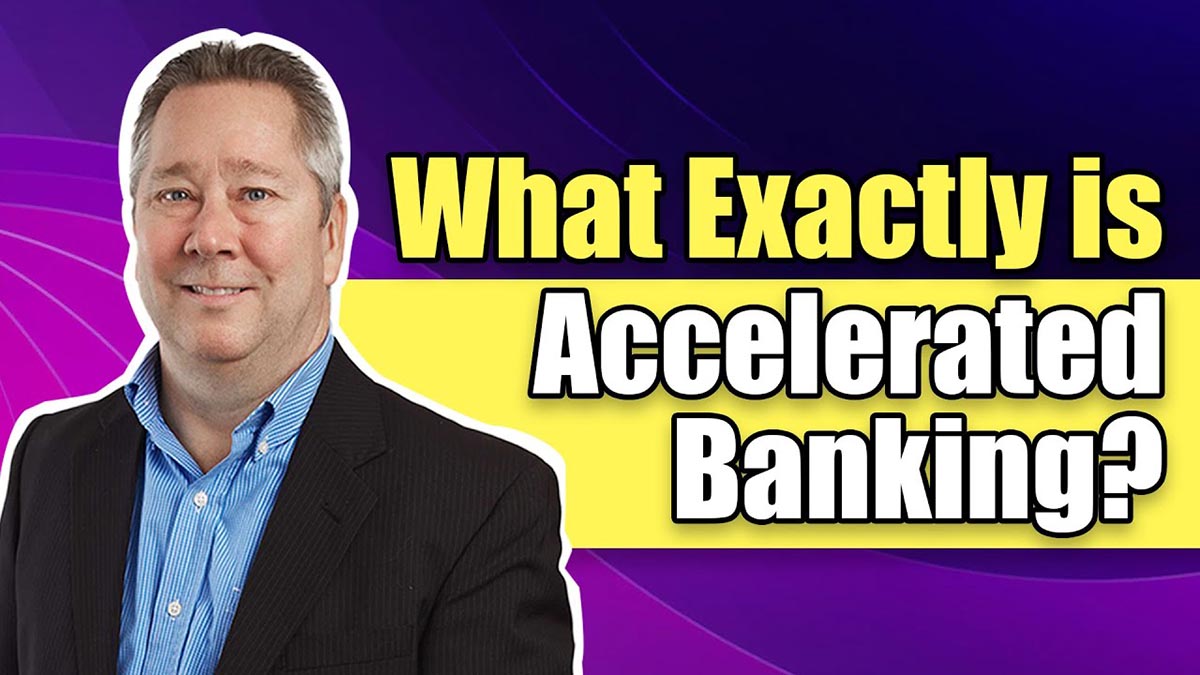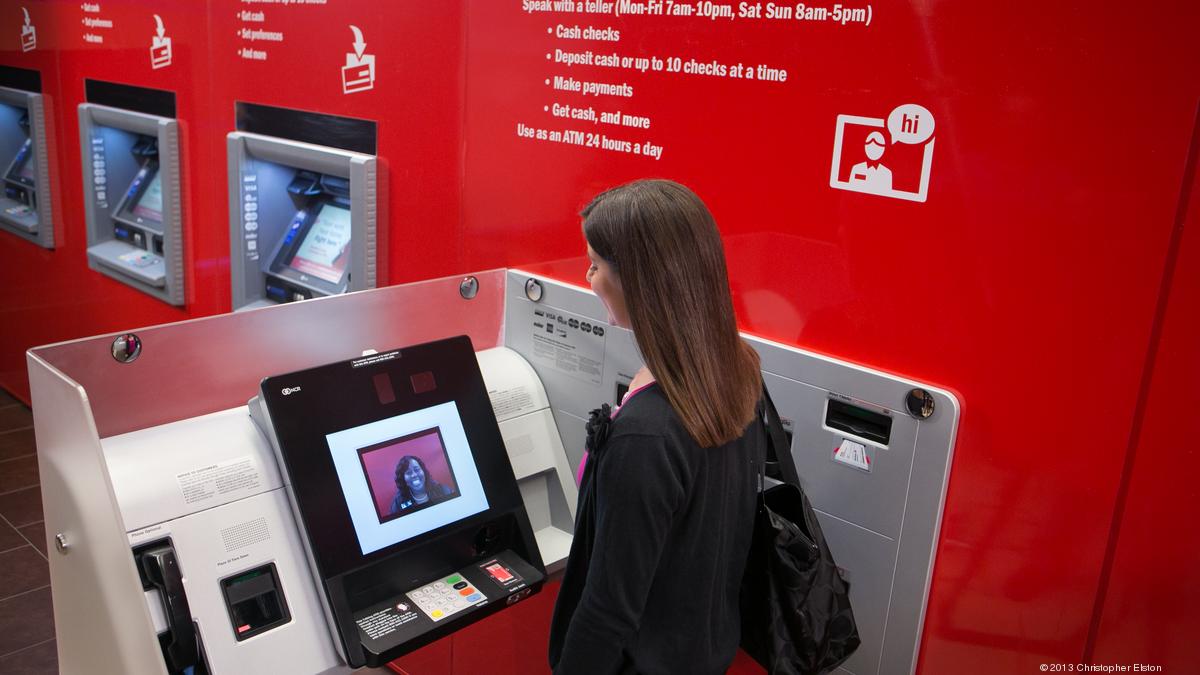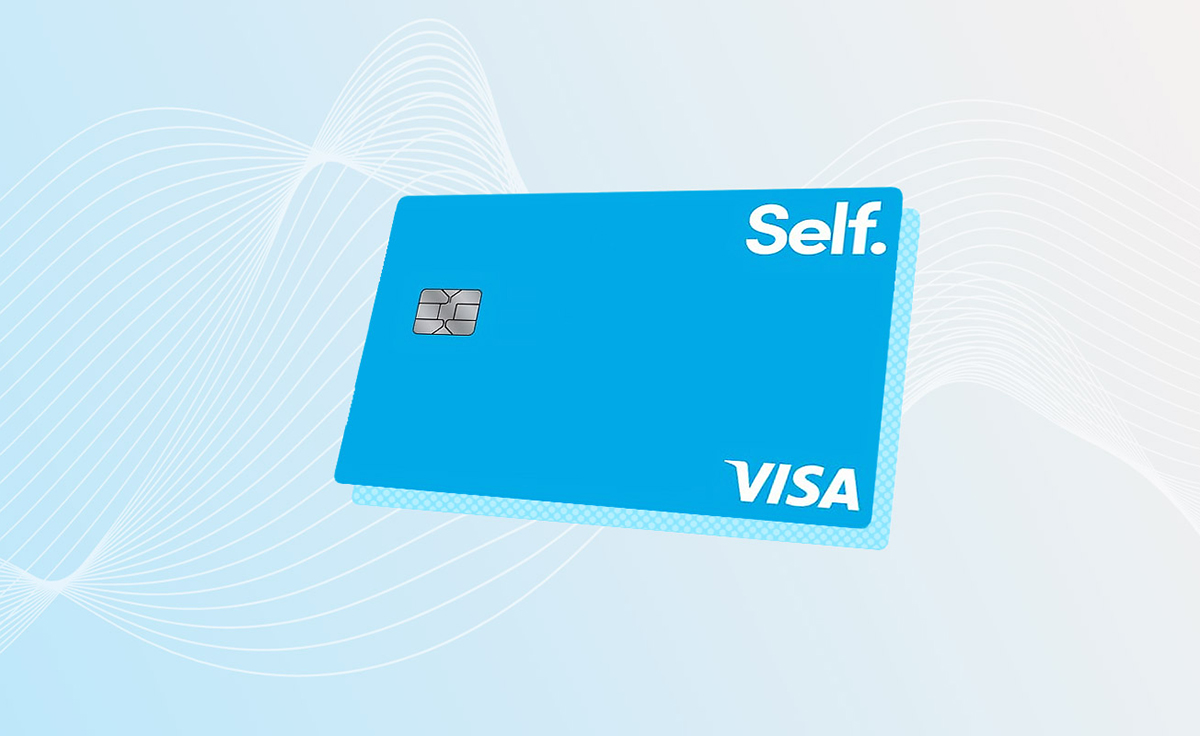

Finance
What Is Accelerated Banking
Published: October 13, 2023
Discover how accelerated banking can revolutionize your financial journey. Explore the benefits of accelerating your finances through strategic financial solutions and maximize your wealth with our comprehensive finance services.
(Many of the links in this article redirect to a specific reviewed product. Your purchase of these products through affiliate links helps to generate commission for LiveWell, at no extra cost. Learn more)
Table of Contents
- Introduction
- Definition of Accelerated Banking
- Benefits of Accelerated Banking
- Who Can Benefit from Accelerated Banking
- How Accelerated Banking Works
- Features and Services Offered in Accelerated Banking
- Common Misconceptions about Accelerated Banking
- Challenges and Risks of Accelerated Banking
- Comparison with Traditional Banking
- Tips for Choosing an Accelerated Banking Provider
- Conclusion
Introduction
Welcome to the world of accelerated banking, where financial institutions are revolutionizing the way customers manage their money. In this article, we will explore what accelerated banking is all about, its benefits, who can benefit from it, how it works, and much more. Whether you’re a seasoned finance professional or someone looking to optimize your personal finances, this guide will provide you with valuable insights into the world of accelerated banking.
Accelerated banking is a term that has gained popularity in recent years, particularly with the rise of digital banking solutions. It refers to a range of innovative financial services and products offered by banks and other financial institutions. Unlike traditional banking, which often involves lengthy and complex processes, accelerated banking aims to simplify and streamline financial operations, providing customers with faster access to their funds and a seamless banking experience.
One of the key advantages of accelerated banking is the speed and efficiency it offers. With traditional banking, customers often have to wait for hours or even days to complete transactions or access funds. In contrast, accelerated banking leverages the power of technology to provide near-instantaneous financial services. From processing payments and transfers to opening accounts and applying for loans, everything is designed to be quick and hassle-free.
Besides speed, accelerated banking also offers a host of other benefits. For one, it provides customers with greater convenience. Traditional banking typically requires customers to physically visit a branch and wait in long queues, whereas accelerated banking allows users to perform most banking functions from the comfort of their homes or on-the-go using their mobile devices.
Moreover, accelerated banking often comes with enhanced security measures. Banks invest heavily in advanced encryption protocols and cybersecurity systems to safeguard customer data and protect against fraud. With features such as biometric authentication and real-time fraud alerts, customers can have peace of mind knowing that their finances are well-protected.
Another advantage of accelerated banking is the personalized and tailored services it offers. Through digital platforms, banks can gather and analyze customer data to gain insights into their financial behaviors and preferences. This enables them to offer targeted financial solutions and customized recommendations, ensuring that customers receive the most suitable products and services for their needs.
In the next sections, we will delve deeper into the intricacies of accelerated banking, exploring its workings, features and services, as well as any potential challenges and risks associated with this emerging banking paradigm. By the end of this article, you’ll have a comprehensive understanding of accelerated banking and be equipped with the knowledge to make informed decisions about incorporating it into your financial strategy.
Definition of Accelerated Banking
Accelerated banking, also known as fast-track banking or high-speed banking, is a modern approach to financial services that focuses on speed, convenience, and efficiency. It leverages cutting-edge technology and digital platforms to provide customers with immediate access to their funds and a seamless banking experience.
Unlike traditional banking, which often involves extensive paperwork, manual processes, and long waiting times, accelerated banking aims to streamline and simplify financial transactions. It utilizes advanced digital tools, such as mobile banking apps, online platforms, and automated systems, to expedite processes and reduce the need for face-to-face interactions.
At its core, accelerated banking revolves around the idea of efficiency. It seeks to eliminate unnecessary steps, automate repetitive tasks, and optimize the use of resources, resulting in quicker turnarounds and improved customer satisfaction. Whether it’s opening a new account, processing payments, or applying for a loan, the goal is to provide customers with near-instantaneous results.
Accelerated banking encompasses a wide range of services and products, including digital banking, mobile payments, instant money transfers, digital wallets, and online loan applications. These offerings enable individuals and businesses to manage their finances on the go, anytime and anywhere, without the constraints of traditional brick-and-mortar banking.
One of the defining features of accelerated banking is the reliance on technology to facilitate transactions and deliver services. It utilizes secure and encrypted channels to ensure the safety of customer information and employs innovative technologies, such as biometric authentication, artificial intelligence, and machine learning, to enhance security and efficiency.
Furthermore, accelerated banking often goes beyond the scope of traditional banking by incorporating additional value-added services. This can include personalized financial advice, budgeting tools, real-time spending insights, and access to exclusive offers and discounts. The aim is to provide customers with a comprehensive financial ecosystem that caters to their unique needs and helps them achieve their financial goals.
Overall, the concept of accelerated banking represents a paradigm shift in the banking industry. It empowers customers with greater control over their finances, eliminates the barriers of time and distance, and fosters a more effortless and personalized banking experience. As technology continues to evolve, accelerated banking is set to become the new standard, transforming the way individuals and businesses interact with financial institutions.
Benefits of Accelerated Banking
Accelerated banking offers a wide array of benefits that make it an attractive option for individuals and businesses alike. By leveraging technology and streamlining processes, accelerated banking provides a faster, more convenient, and efficient banking experience. Let’s explore some of the key benefits:
- Instant Access to Funds: One of the biggest advantages of accelerated banking is the ability to access funds immediately. Whether it’s receiving a paycheck, making a transfer, or withdrawing cash, accelerated banking ensures that your funds are available to you without delay. No more waiting for checks to clear or standing in long lines at the bank.
- Convenience and Accessibility: Accelerated banking eliminates the need to visit a physical bank branch for routine transactions. Through mobile banking apps and online platforms, you can manage your finances anytime and anywhere. Whether you’re at home, at work, or on vacation, you have full control over your accounts and can perform various banking tasks with just a few taps on your smartphone.
- Time-Saving: Traditional banking can be time-consuming, requiring paperwork, filling out forms, and going through lengthy approval processes. Accelerated banking automates many of these tasks, saving you valuable time. Opening an account, applying for loans or credit cards, and even resolving issues or disputes can be done quickly and efficiently online, giving you more time for other important aspects of your life.
- Enhanced Security: With accelerated banking, security measures are a top priority. Banks invest heavily in advanced encryption protocols and cybersecurity systems to protect customer data from fraud and theft. Biometric authentication, such as fingerprint or facial recognition, adds an extra layer of security, ensuring that only authorized individuals can access your accounts and perform transactions.
- Personalized Financial Solutions: Accelerated banking platforms use data analytics to gain insights into your financial habits, needs, and goals. This allows banks to offer personalized financial solutions and tailored recommendations. Whether it’s suggesting suitable savings plans, investment opportunities, or customized loan options, accelerated banking ensures that you receive financial services that align with your specific requirements.
- Cost-Effective: By reducing the need for physical infrastructure and manual processes, accelerated banking can often offer more cost-effective services. Many accelerated banking providers have lower fees, minimal or no account maintenance charges, and competitive interest rates. This translates into cost savings for customers, allowing them to maximize their financial resources.
These are just a few of the many benefits that accelerated banking brings to the table. Its emphasis on speed, convenience, security, and personalized services offers a modern and efficient banking experience that caters to the needs and expectations of today’s digitally-driven consumers.
Who Can Benefit from Accelerated Banking
Accelerated banking is designed to benefit a wide range of individuals and businesses. Whether you’re an individual looking for greater convenience and control over your finances or a business owner seeking streamlined financial operations, accelerated banking can provide significant advantages. Let’s explore the different groups that can benefit from this innovative approach to banking:
- Individuals: Accelerated banking offers individuals the convenience of managing their finances on-the-go. Whether you need to check your account balance, transfer funds, pay bills, or apply for a loan, you can do it all from the comfort of your own home or on your mobile device. It eliminates the hassle of visiting physical bank branches or dealing with time-consuming paperwork, giving you more time and flexibility in your daily life.
- Small Business Owners: Small businesses can greatly benefit from accelerated banking. It allows for swift and efficient financial transactions, such as receiving payments from customers, making vendor payments, and managing inventory. Accelerated banking platforms often offer powerful accounting tools, expense tracking, and invoice management features that help streamline financial operations, saving time and reducing administrative overhead.
- Frequent Travelers: For those who travel frequently, accelerated banking is a game-changer. It provides hassle-free access to funds and banking services no matter where you are in the world. Whether it’s withdrawing cash in a foreign country, making currency exchanges, or managing your accounts while abroad, accelerated banking ensures that your financial needs are met seamlessly without any geographical restrictions.
- Busy Professionals: Accelerated banking is perfect for professionals who have busy schedules and limited time for banking tasks. Whether you’re juggling work, family, and personal commitments, accelerated banking allows you to fit banking into your hectic lifestyle. With swift and efficient mobile banking apps, you can manage your finances during lunch breaks, commutes, or any other free moments, saving you time and eliminating the need for additional errands.
- Younger Generations: Accelerated banking caters to the preferences and behaviors of younger generations who are tech-savvy and value convenience. Millennials and Gen Z, in particular, place a premium on digital experiences and on-the-go accessibility. Accelerated banking provides them with the flexibility to manage their finances digitally, aligning with their lifestyle and needs.
- Retirees: Even retirees can benefit from accelerated banking. With features like automated bill payment, mobile check deposits, and real-time account monitoring, accelerated banking simplifies financial management for retirees. It provides them with peace of mind by ensuring that their assets are easily accessible and secure, while minimizing the need for physical visits to banks.
These are just a few examples of the diverse range of individuals and businesses that can benefit from accelerated banking. Whether you’re looking for convenience, time-savings, enhanced security, or personalized financial solutions, accelerated banking offers a modern and efficient banking experience that caters to your specific needs.
How Accelerated Banking Works
Accelerated banking operates on the principles of speed, efficiency, and technology. It leverages digital platforms, advanced automation, and seamless integration with financial systems to provide a streamlined and real-time banking experience. Here’s a breakdown of how accelerated banking works:
- Digital Platforms: Accelerated banking relies heavily on digital platforms, such as mobile banking apps and online banking portals. These platforms act as the gateway for customers to access their accounts and perform various banking transactions. Users can log in securely from their smartphones, tablets, or computers, gaining instant access to their financial information and services.
- Real-Time Transaction Processing: One of the key features of accelerated banking is the ability to process transactions in real-time. Whether it’s transferring funds between accounts, making payments, or depositing checks using mobile check capture, the transactions are executed instantly and reflected immediately in the account balance. This eliminates the need for the time-consuming process of waiting for transactions to be processed and updates to be reflected.
- Automated Processes: Accelerated banking relies on automation to streamline processes and reduce manual intervention. From account openings to loan applications, many of the steps involved are automated, eliminating the need for physical paperwork and reducing processing times. Automated systems also help with tasks such as fraud detection, identity verification, and compliance checks, ensuring security and regulatory compliance.
- Integration with Financial Systems: Accelerated banking platforms are designed to integrate seamlessly with various financial systems. This allows for real-time access to account information, coordination with payment networks, and integration with external service providers. These integrations enable customers to enjoy a wide range of services, such as instant money transfers, bill payments, and access to investment portfolios.
- Advanced Security Measures: With the accelerated nature of banking transactions, security is of utmost importance. Accelerated banking employs robust security measures, including encryption protocols, secure authentication methods, and fraud detection systems. Biometric authentication, such as fingerprint or facial recognition, adds an extra layer of security, ensuring that only authorized individuals can access accounts and perform transactions.
- Data Analytics and Personalization: Accelerated banking utilizes data analytics to gather insights into customer behavior, preferences, and financial patterns. This data is used to offer personalized financial solutions, tailored recommendations, and targeted offers. By understanding customer needs and providing relevant services, banks can enhance the overall banking experience and build stronger customer relationships.
Overall, accelerated banking transforms the traditional banking model by leveraging digital technology, automation, and real-time processing. By offering seamless access to financial services, real-time transaction capabilities, personalized solutions, and enhanced security, accelerated banking provides a modern, efficient, and customer-centric banking experience.
Features and Services Offered in Accelerated Banking
Accelerated banking offers a wide range of features and services that enhance the banking experience and provide greater convenience, efficiency, and control over finances. Here are some of the key features and services commonly offered in accelerated banking:
- Mobile Banking Apps: Accelerated banking platforms provide mobile banking apps that allow customers to access their accounts, perform transactions, and manage their finances directly from their smartphones or tablets. These apps often feature intuitive interfaces, seamless navigation, and a comprehensive range of banking services at the users’ fingertips.
- Instant Payments and Transfers: One of the hallmarks of accelerated banking is the ability to make instant payments and transfers. Whether it’s sending money to a friend, paying bills, or transferring funds between accounts, these transactions can be completed swiftly and securely, often in real-time or within seconds.
- Digital Wallets: Accelerated banking embraces the use of digital wallets, allowing customers to store their payment card information securely on their mobile devices. This enables convenient and contactless payments through platforms like Apple Pay, Google Pay, Samsung Pay, and other digital wallet providers.
- Account Aggregation: Accelerated banking platforms often offer the ability to aggregate multiple accounts from different financial institutions into a single, unified view. This allows users to easily monitor their financial holdings, view balances and transactions, and get an overall snapshot of their net worth without having to log in to multiple accounts individually.
- Personal Financial Management: Many accelerated banking platforms include personal financial management tools to help users track and manage their spending, budget effectively, and set financial goals. These tools provide real-time insights into spending patterns, categorize expenses, and offer alerts to help users stay on top of their financial health.
- Online Loan Applications: Accelerated banking simplifies the loan application process by offering online applications that can be completed quickly and easily. Users can submit their applications online, upload necessary documents digitally, and receive loan approvals faster than traditional methods. This reduces the time and effort involved in securing a loan.
- Investment Platforms: Accelerated banking often includes investment platforms that allow users to manage and monitor their investment portfolios, make trades, and access market research and insights. These platforms offer a streamlined and user-friendly interface, empowering individuals to take control of their investments and make informed financial decisions.
- Customer Support and Assistance: Accelerated banking platforms provide comprehensive customer support services, including live chat, phone support, and email assistance. They also offer self-service options, such as FAQs and knowledge bases, to help users find answers to common queries quickly and efficiently.
These are just a few examples of the features and services offered in accelerated banking. The exact offerings may vary depending on the specific bank or financial institution. However, the overarching goal is to provide customers with a comprehensive suite of digital services that cater to their various banking and financial needs, ultimately enhancing their banking experience.
Common Misconceptions about Accelerated Banking
As accelerated banking continues to gain popularity, there are some common misconceptions surrounding this innovative approach to banking. Let’s address these misconceptions and provide clarity on the realities of accelerated banking:
- Security Concerns: One misconception is that accelerated banking is less secure than traditional banking. In reality, accelerated banking platforms invest heavily in advanced encryption protocols, secure authentication methods, and cybersecurity systems to protect customer data. Biometric authentication and real-time fraud monitoring add an extra layer of security, making accelerated banking as secure if not more secure than traditional banking.
- Limited Services: Some people believe that accelerated banking only offers basic services and lacks the comprehensive range of services provided by traditional banks. This is not true. Accelerated banking encompasses a wide array of services, including online account management, instant payments, mobile check deposits, investment platforms, and personalized financial advice. The goal is to provide customers with a robust and convenient banking experience.
- Technology Barrier: Another misconception is that accelerated banking is only suitable for tech-savvy individuals and may be challenging for those who are less comfortable with technology. In reality, accelerated banking platforms are designed with user-friendly interfaces and offer intuitive mobile apps and online portals. Banks also provide customer support and assistance to help users navigate through the digital banking experience, making it accessible to a wide range of users.
- Lack of Personalized Service: Some people assume that accelerated banking sacrifices personalized service in favor of efficiency. However, accelerated banking platforms utilize data analytics and customer insights to offer personalized financial solutions and tailored recommendations. Through digital platforms, users can receive targeted offers, customized savings plans, and investment strategies that align with their specific needs and goals.
- Loss of Human Interaction: A common misconception is that accelerated banking eliminates the need for human interaction, making the banking experience impersonal. While it’s true that accelerated banking reduces reliance on physical bank branches, it doesn’t eliminate the presence of customer support. Banks still provide customer service representatives, online chat support, and phone support to address any queries or concerns, ensuring that users receive the necessary assistance and personalized attention they require.
- Exclusion of Older Generations: There is a misconception that accelerated banking is primarily targeted towards younger generations, leaving older individuals behind. However, accelerated banking is designed to be inclusive and accessible to users of all ages. Many older individuals are embracing digital technology, and banks provide support and resources to assist them in adopting accelerated banking services.
It’s important to dispel these misconceptions and understand that accelerated banking offers secure, comprehensive, and personalized banking solutions for users of all backgrounds. It embraces technology to enhance the banking experience, without sacrificing security or customer service.
Challenges and Risks of Accelerated Banking
While accelerated banking brings numerous benefits, it also presents some challenges and risks that users should be aware of. Understanding these potential drawbacks will help individuals make informed decisions and take necessary precautions. Here are some of the challenges and risks associated with accelerated banking:
- Cybersecurity Threats: As accelerated banking relies heavily on digital platforms and transactions, the risk of cybersecurity threats increases. Hackers and cybercriminals are constantly looking for vulnerabilities to exploit, making it crucial for banks and users to implement robust security measures. Banks must continually upgrade their security systems, employ encryption protocols, and educate customers about best practices to mitigate the risk of data breaches and fraud.
- Technological Glitches: While technology facilitates accelerated banking, there is always a risk of technological glitches or system outages. This can result in temporary unavailability of services or disruptions in transaction processing. While banks have backup systems and contingencies in place, users should be prepared for potential disruptions and have alternative means of accessing their funds or making critical transactions.
- Dependency on Internet Connectivity: Accelerated banking relies on internet connectivity to function effectively. If there are network issues or a lack of stable internet access, users may encounter difficulties accessing their accounts or conducting transactions. It’s important for users to have a reliable internet connection, especially in areas where connectivity may be unreliable.
- Phishing and Identity Theft: With increased digital interactions, there is a risk of phishing attempts and identity theft. Cybercriminals may attempt to deceive users into revealing their personal information through fraudulent emails or websites in order to gain unauthorized access to their accounts. Users should remain vigilant and cautious about sharing sensitive information and ensure they are accessing banking platforms through authenticated and secure channels.
- Limited Physical Banking Services: Accelerated banking relies on digital platforms, reducing the availability of physical banking services. While this is convenient for many transactions, some users may still require certain services that are traditionally offered in physical branches. It’s important to assess personal banking needs and ensure that accelerated banking platforms can adequately address them or consider maintaining a relationship with a bank that offers physical branch services, if necessary.
- Technological Advancements and Obsolescence: Technology evolves rapidly, and new advancements may render existing accelerated banking platforms obsolete. Users may need to adapt to new systems, upgrade their devices, or shift to new platforms to take advantage of the latest features and security enhancements. It’s important to stay informed about technological advancements in the banking industry and be prepared for potential changes or updates.
While these challenges and risks exist, they can be mitigated through proactive measures and collaboration between banks and customers. By staying informed, practicing good security habits, and regularly updating devices and software, users can minimize the risks associated with accelerated banking and enjoy its many benefits.
Comparison with Traditional Banking
Accelerated banking represents a departure from traditional banking models, introducing a range of digital solutions and streamlining processes to provide a more efficient, convenient, and customer-centric banking experience. Let’s compare accelerated banking with traditional banking to understand the key differences:
- Access and Convenience: Traditional banking often requires customers to visit physical branches during specified operating hours, which can be inconvenient and time-consuming. In contrast, accelerated banking offers 24/7 access to accounts and services through mobile banking apps and online platforms. This allows users to manage their finances anytime and anywhere, providing unparalleled convenience and accessibility.
- Transaction Speed: Traditional banking transactions can take hours or even days to process, especially when dealing with cross-border or large transactions. Accelerated banking leverages real-time processing and digital systems to provide near-instantaneous transaction processing. Payments, transfers, and deposits are completed quickly, ensuring that users have faster access to their funds.
- Personalization and Insights: Traditional banking typically relies on standardized products and services that may not be tailored to individual needs. Accelerated banking, on the other hand, utilizes data analytics and customer insights to offer personalized financial solutions and tailored recommendations. This allows banks to provide targeted offers, customized savings plans, and investment strategies that align with each customer’s unique financial goals.
- Physical Infrastructure: Traditional banks rely on physical branches, requiring significant investment in infrastructure, staffing, and maintenance. Accelerated banking significantly reduces the need for physical infrastructure, allowing banks to operate with leaner operations, lower overhead costs, and pass on cost savings to customers through better interest rates, reduced fees, or enhanced services.
- Security: Both traditional banking and accelerated banking place a high priority on security. However, accelerated banking employs advanced encryption protocols, multi-factor authentication, and real-time fraud detection technologies to safeguard customer data and transactions. These robust security measures, combined with continuous monitoring, help ensure that users’ financial information is secure, minimizing the risk of fraud and identity theft.
- Customer Support: Traditional banking often relies on in-person interactions with bank representatives for customer support. In accelerated banking, customer support is typically provided through online chat, phone support, or email. While in-person interactions may be reduced, the convenience of instant support and self-service options ensures that users’ queries and concerns are addressed in a timely manner.
- Range of Services: Traditional banking has historically offered a wide range of services, including savings and checking accounts, loans, and investment products. Accelerated banking aims to replicate and often expand these services, providing a comprehensive suite of digital offerings, such as mobile payments, digital wallets, online investment platforms, and instant loan approvals. While the range of services may vary between banks, accelerated banking continues to evolve and introduce innovative solutions to meet customers’ evolving needs.
While both traditional banking and accelerated banking have their merits, the increasing demand for convenience, speed, personalization, and seamless digital experiences has made accelerated banking a compelling choice for many individuals and businesses. As technology continues to advance, it’s expected that the boundaries between these two models will continue to blur, with traditional banks incorporating more accelerated banking features to meet customers’ expectations for efficiency and convenience.
Tips for Choosing an Accelerated Banking Provider
When selecting an accelerated banking provider, it’s important to consider various factors to ensure that you choose the right institution that meets your needs and offers a secure and reliable banking experience. Here are some key tips to help you in the decision-making process:
- Research and Compare: Take the time to research and compare different accelerated banking providers. Look at their offerings, features, fees, and customer reviews. Consider what is most important to you, whether it’s a user-friendly mobile app, competitive interest rates, or personalized financial services. Comparing multiple providers will help you make an informed choice.
- Security Measures: Look for a provider that prioritizes security. Pay attention to the security measures they have in place, such as encryption protocols, multi-factor authentication, and fraud detection systems. Ensure that the provider adheres to industry regulations and has a track record of safeguarding customer data and transactions.
- Availability and Accessibility: Consider how accessible and available the provider’s banking services are. Ensure that their mobile banking app or online platform is user-friendly and compatible with your devices. Check if they have 24/7 customer support, so you can get assistance whenever you need it. Additionally, verify if their services extend to areas you frequently visit or conduct business in.
- Range of Services: Assess the range of services offered by the provider. Consider your specific banking needs, such as online bill payments, instant money transfers, investment options, or access to loans. Choose a provider that offers the services you require, ensuring that they align with your financial goals and preferences.
- Customer Support: Evaluate the level of customer support provided by the banking provider. Check if they offer multiple channels of customer support, such as phone, email, or live chat. It’s crucial to select a provider that offers timely and responsive support in case you encounter any issues or have queries about their services.
- Transparency and Fees: Pay attention to the fee structure and terms and conditions of the provider. Look for transparency in their fee disclosures and ensure you understand the charges associated with different services. Consider whether the fees are reasonable and competitive compared to other providers in the market.
- Track Record and Reputation: Consider the track record and reputation of the accelerated banking provider. Look for reviews and ratings from other customers to gauge their overall satisfaction with the provider’s services. Additionally, research the provider’s financial stability and longevity in the market to ensure that they are a reputable institution.
- Integration with Other Financial Tools: If you use other financial tools or apps, consider if the accelerated banking provider offers integration with these tools. This can include integration with personal finance management apps, accounting software, or investment platforms. Seamless integration can greatly enhance your overall financial management capabilities.
By considering these tips and evaluating different accelerated banking providers based on your preferences and needs, you can choose the provider that aligns with your financial goals and provides a secure and efficient banking experience.
Conclusion
Accelerated banking is transforming the way individuals and businesses manage their finances. With its focus on speed, convenience, and efficiency, accelerated banking offers a range of benefits that cater to the needs and expectations of today’s digitally-driven world.
Through mobile banking apps, online platforms, and advanced automation, accelerated banking provides 24/7 access to accounts, near-instantaneous transactions, and personalized financial solutions. It eliminates the constraints of traditional banking, offering convenience, security, and comprehensive services that cater to various customer needs.
While accelerated banking presents some challenges and risks, such as cybersecurity threats and technology dependencies, these can be managed with proper precautions and collaborations between banks and users. By staying informed, practicing good security habits, and understanding the limitations and contingencies of accelerated banking, users can navigate the digital landscape with confidence.
When selecting an accelerated banking provider, it’s important to research, compare, and consider factors such as security measures, accessibility, customer support, and fees. By taking a thoughtful approach and selecting a reputable provider that aligns with your financial goals, you can enjoy the numerous benefits that accelerated banking has to offer.
In conclusion, accelerated banking represents a paradigm shift in the banking industry, empowering individuals and businesses with efficient, convenient, and personalized financial services. By embracing technology, streamlining processes, and prioritizing customer experience, accelerated banking paves the way for a future where banking is seamless, accessible, and tailored to individual needs.














